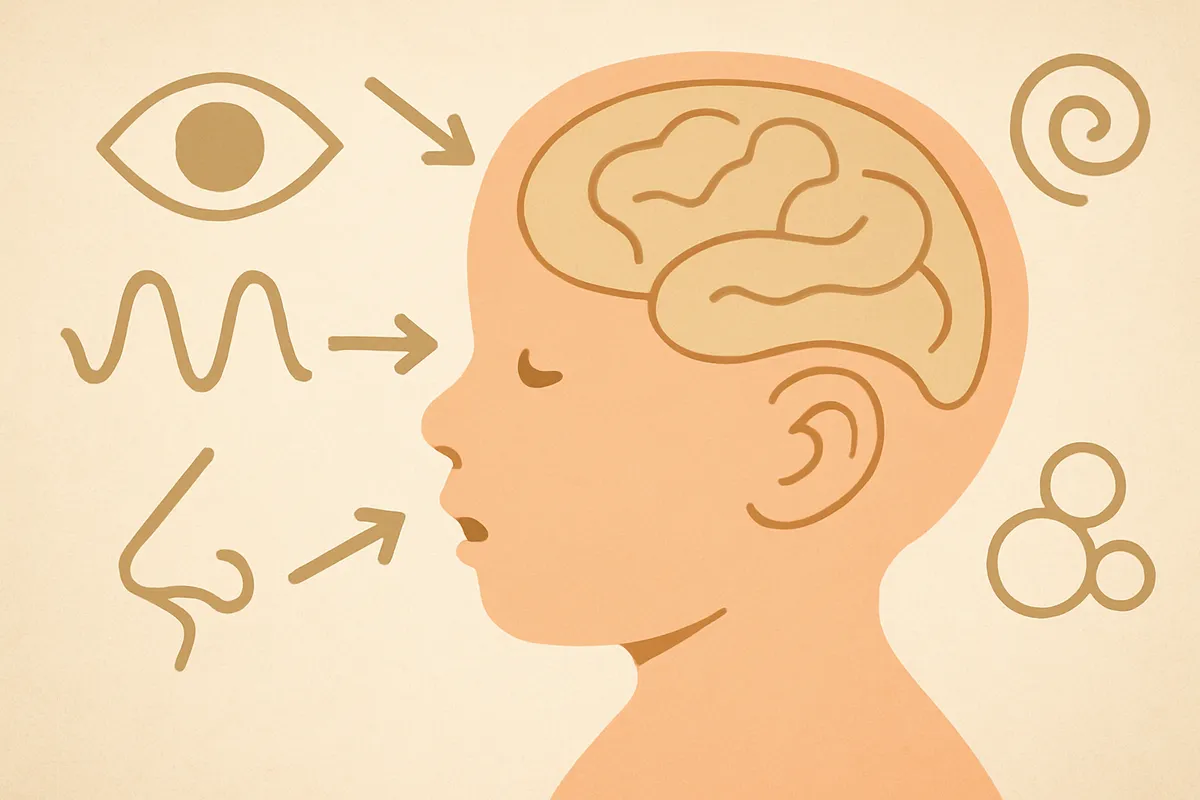Before the Diagnosis, There Was Sensation: A New Model of Early Autistic Development — and Its Blind Spots
 Some developmental models try to trace autism back to genes, brain scans or parental worry.
Some developmental models try to trace autism back to genes, brain scans or parental worry.
Others, like a study recently published in Psychological Review, start somewhere more honest: the sensory world of the infant.
In "A Cascading Effects Model of Early Sensory Development in Autism" (Russo et al., 2025), the authors offer something rare in high-prestige psychology:
a theory of autistic emergence that doesn’t begin in pathology.
Instead, they ask what happens when early sensory experiences — intense, avoidant, curious, disorganized — shape how a baby moves, learns, and connects.
What happens when the world feels different from the start?
And what happens when that difference compounds, not as deficit, but as divergence?
The model they offer is compelling.
It frames autism not as a fixed set of traits, but as something that emerges from the interplay between sensory experience and developmental context — especially in the first year of life, when perception and interaction are still learning to dance with each other.
That shift matters. It repositions sensory processing from the margins of autism research to its foundation.
And it challenges early intervention models that chase normalization before understanding adaptation.
What the Model Gets Right
The authors make important strides.
They emphasize variability, not impairment.
They resist reductionism, showing how no single sensory pattern guarantees any outcome.
They explicitly reject one-size-fits-all trajectories, and they name environmental context as a shaping force.
There is real promise here — especially for researchers and clinicians willing to question their own assumptions about what “typical” development even means.
Where the Frame Still Constrains
Yet that same promise gets constrained by the frame.
The paper talks about “less flexible behavior” or “disrupted social learning” as possible downstream effects of sensory difference — but it stops short of examining how social environments define and enforce those concepts.
It highlights caregiver-infant dynamics and the role of context, but doesn’t deeply explore how caregivers interpret or respond to sensory divergence — or how those interpretations shape developmental expectations.
The result is a model that opens the door to complexity, but occasionally retains traces of older assumptions: that divergence from typical trajectories may signal risk, and that developmental outcomes need explanation when they stray.
The Absent Narrator: Autistic Lived Experience
What’s also missing is the voice of the sensory subject — not the baby, of course, but the autistic adult who once was that baby.
The model doesn’t ask what those sensory differences felt like, only what they correlated with.
It doesn’t trace how environments might have punished divergence, only how they scaffolded outcomes.
That gap matters.
Because when we define developmental difference through the lens of outcome — instead of lived experience — we risk turning sensory divergence into an early signal for later deviation.
And from there, it’s a short slide to risk framing, early screening, and interventions that implicitly treat divergence as something to monitor or mitigate.
This model avoids that slide — explicitly.
But the slope is still visible.
And without deeper engagement with autistic epistemology, it could be interpreted through a deficit-first lens despite the authors’ intentions.
A Shift Worth Following
Still, something important is happening here.
This paper doesn’t treat sensory difference as a glitch to be managed.
It treats it as the ground floor of experience — the place where bodies, environments, and meaning start to form.
That’s not just a shift in theory.
It’s a shift in allegiance.
If researchers follow that shift to its logical end, they’ll have to ask harder questions about what systems reward certain trajectories, and who gets left behind when development becomes a race toward compliance.
This paper doesn’t go that far.
But it clears a path.
And for once, the path starts with sensation — not suspicion.